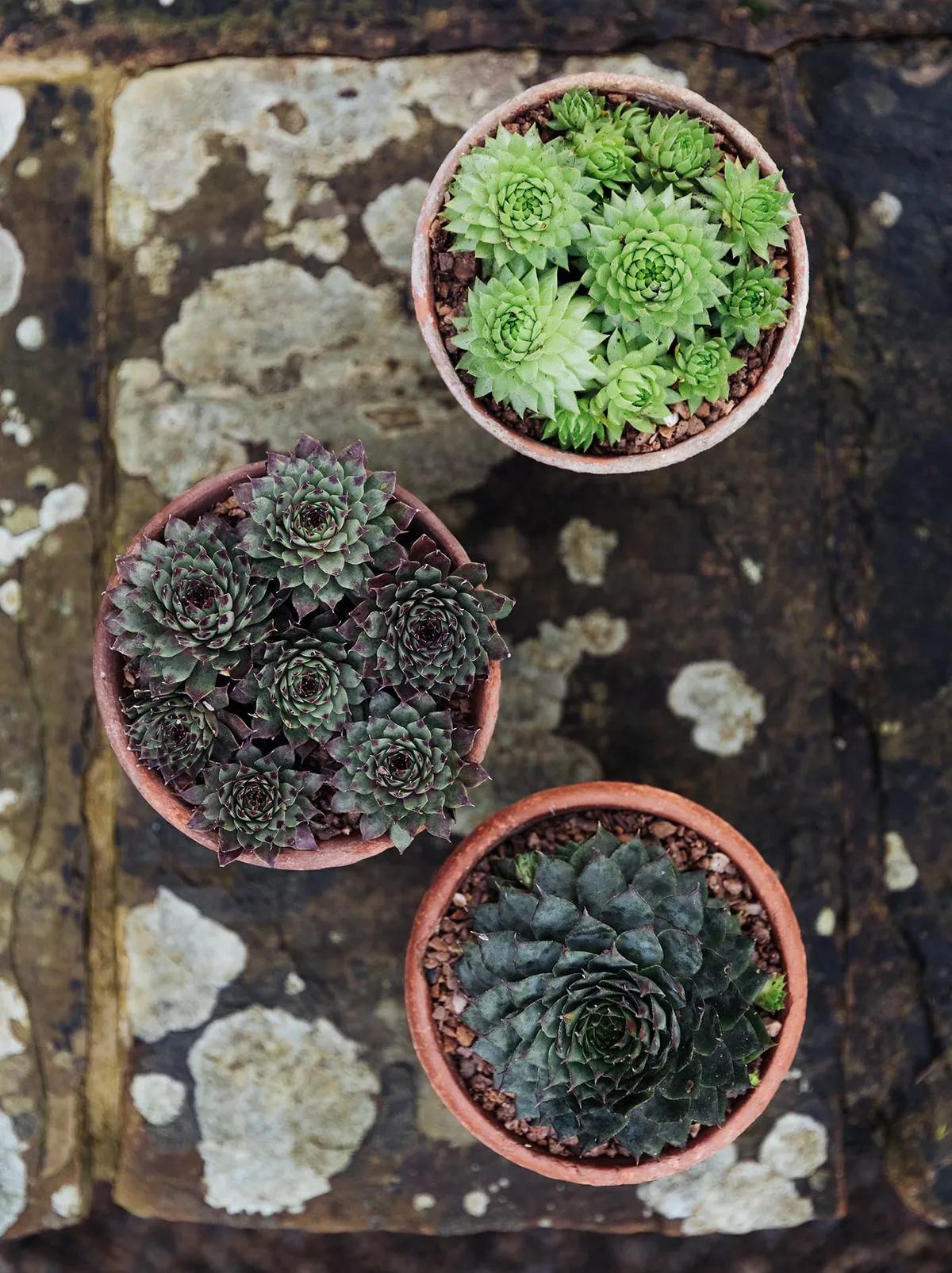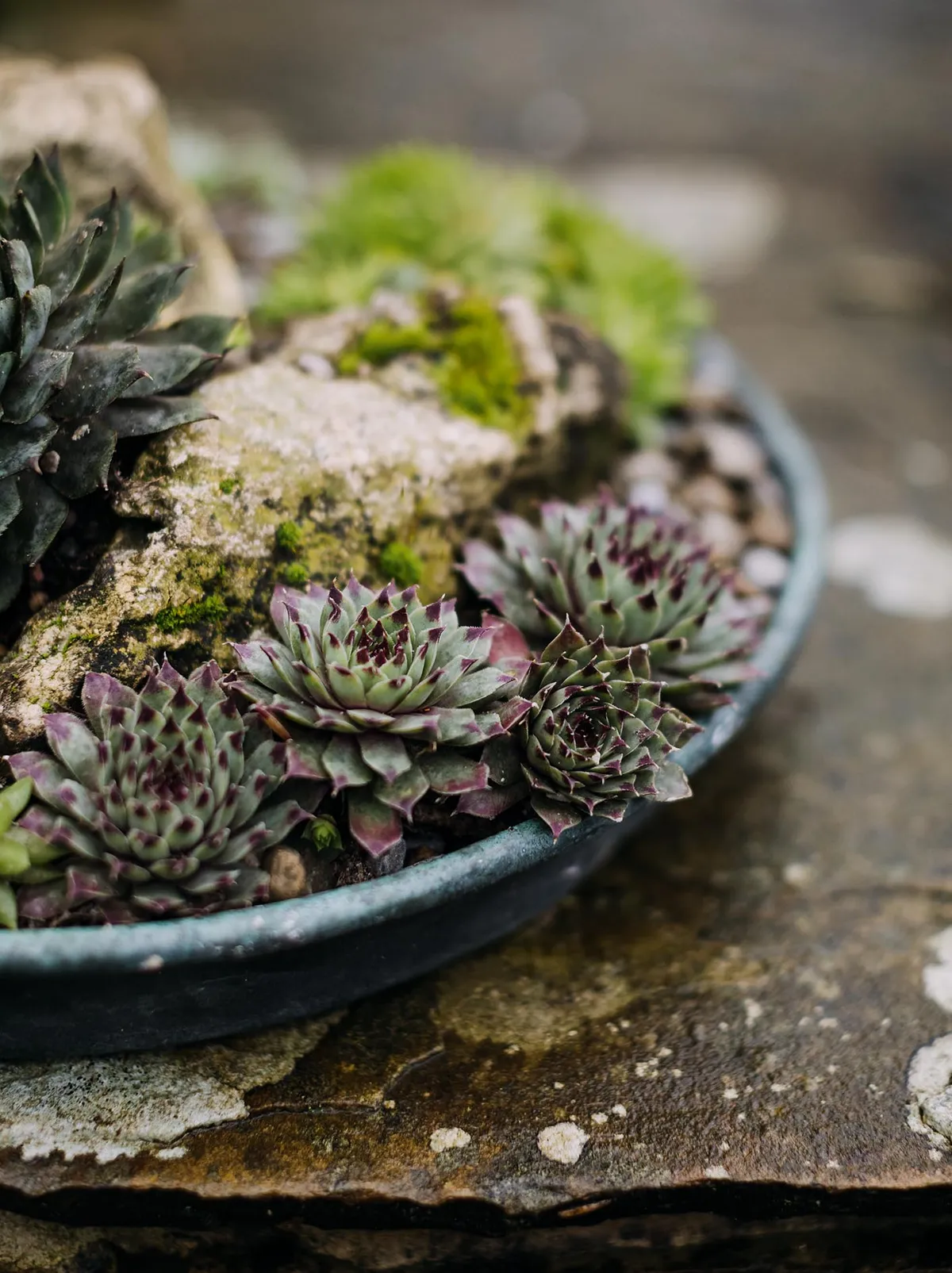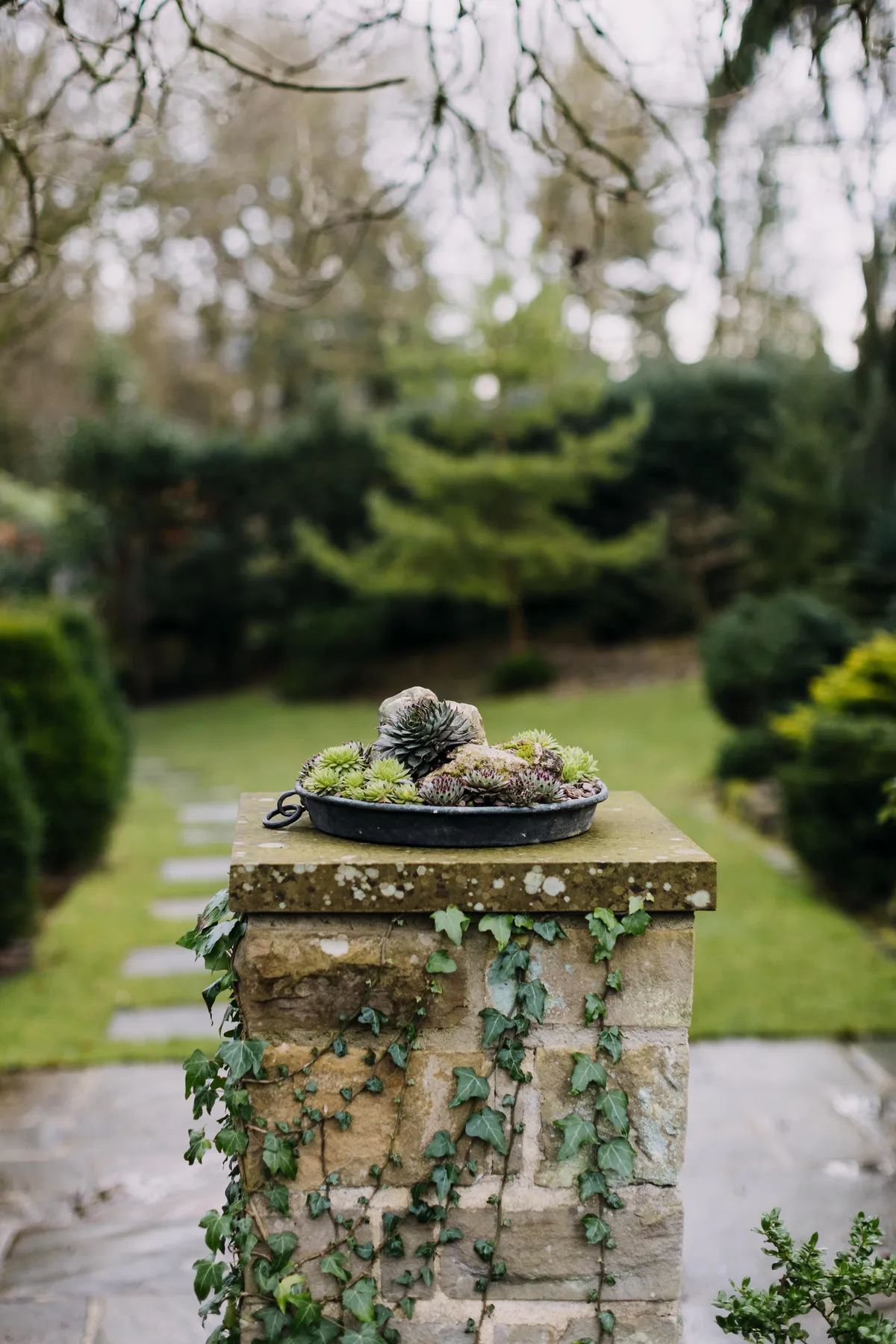The tight, intricate spirals of houseleeks are native to regions of rocky hillsides and mountains, making them incredibly tough and very easy to grow as they tolerate both intense heat and hard frosts. In this shallow copper cooking pan, I have created a miniature landscape using local sandstone and three of my favourite houseleek cultivars. Nestling neatly in the cracks, they will eventually create a patchwork on rosettes that look impressive year-round. Here's how to make yours.
How to achieve the look
Houseleeks require very little depth, so this rustic copper pan is perfect. First, place the desired rocks to create a miniature mountainscape, this provides the free- draining crevices that will help the houseleeks thrive. The tight rosettes can be squeezed between the container’s edge and the tiny ravines between the rocks. The largest cultivar here is the impressive Sempervivum ‘Kong’, with domed, dark grey- green rosettes that sit in the centre of the mini mountain. Around the pan’s edge I’ve used the dark maroon-tipped Sempervivum calcareum ‘Sir William Lawrence’ in repetition with the smaller, bright-green rosettes of Jovibarba allionii, which help to show off the dark tones of the sempervivums.
Care and cultivation
These tender-looking succulents can be hardy to -15oC and tolerate very unfertile and stony ground. It is important when growing them in containers that the medium is very free draining as they will rot in the winter if sitting wet. I use a very simple 50/50 mix of horticultural grit and any peat-free, multi-purpose compost, with no feed. The individual rosettes are monocarpic so when they produce a flower spike in the summer they will expire. In this process they will produce many little rosette offsets at their base, which can be easily propagated or left to create a dense carpet. To propagate, simply twist the young rosettes between your thumb and index finger and pot on or move to your desired location.
Plants To Use

Jovibarba allionii
Evergreen mat-forming succulent. The yellow-green rosettes are bright in appearance and make tight, spreading clusters that are attractive year round. 10cm. AGM. RHS H4.
Sempervivum calcareum ‘Sir William Lawrence’
A slowly spreading, mat-forming evergreen succulent with rosettes of grey- green leaves that have maroon tips. Produces a small spire with pink flowers in the summer. 8cm. AGM. RHS H5, USDA 4a-9b.
Sempervivum ‘Kong’
Producing some of the largest rosettes in the genus. Dark, grey-green in appearance. 15cm. RHS H5.
Looking for more ideas? Don't forget, our Pots section is brimming with gorgeous inspiration.


